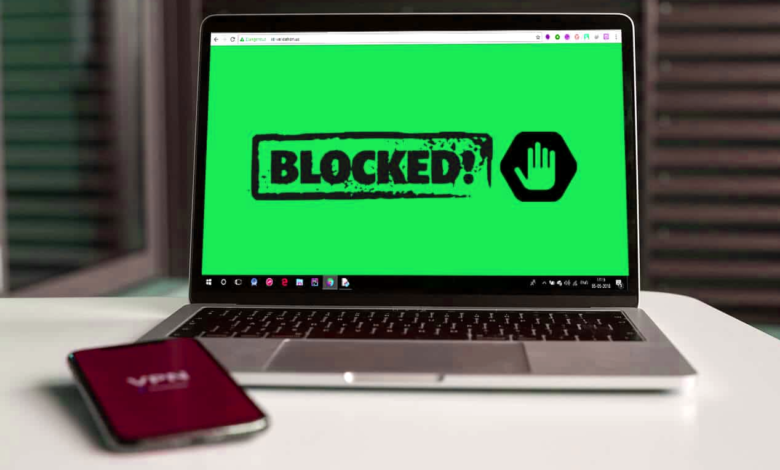
URL filtering is often used in places where people shouldn’t have free, unrestricted access to the web, like workplaces, schools, and other places. The best software for URL filtering makes this process easy and works well.
But there will be times when you need to go to a URL that is blocked for one reason or another. The good news is that if you know a few simple things, it’s easy to get around URL filtering. This article tells you how to do it and what you need to know as you do it.
How to bypass URL filtering: Step-by-step
Make sure your computer has a lot of extra battery power and a stable internet connection before you start. If you can, be ready to download software, and make sure that what you’re doing isn’t against the law or company policy.
We also think you should spend some time learning how to get around URL filters. If you have an hour or two to kill, you should start right away.
Step 1: Try using a VPN
If you can install and use a VPN, you should be able to easily get around most URL filtering software and access websites from anywhere in the world. You will need to install a VPN to get started, and there are many free ones available. If the system administrator at your job has stopped you from installing software, you’ll have to try something else.
If you are able to set up a VPN, you can just change the location to another country to get to the content that is blocked. Most of the time, this works because URL filtering is done at the country level, and a VPN sends your traffic through a server in another country.
For instance, if the.com version of a website is blocked, you could set your VPN to Australia to access the.au version instead.
Step 2: Use a proxy
Proxy sites have been around for a long time, and kids have used them for years to get to websites that their schools block. They can also help you get around URL filtering in a lot of ways.
Just like VPNs, proxies route your browsing through a different server. Most of them are app-specific, and they work by changing your IP address to make it look like you’re in a different country.
Proxy servers aren’t the safest way to get around URL filtering, though. They don’t always use encryption, and free proxies can add ads and get information about users. If you do decide to use a proxy, ensure you use a reputable option.
Step 3: Access international versions with Google Translate
Using Google Translate to get around URL restrictions is a clever way to get around them. In simple terms, you can trick it into acting like a proxy server and sending your traffic to an international version of the website you want to see.
To get started, copy the URL of the site you want to visit and paste it into the Google Translate tool’s left-hand window. (You have to use the translate.google.com version, not the one built into the Google search engine.)
Next, change the language in the right-hand panel, click the Translate button, and click the link that comes up to go to the website that has been filtered. This method won’t work for all sites, but if you’re having trouble, it’s worth a shot.
Step 4: Install the Tor browser
If you can’t get a VPN or proxy to work, you might have to use the Tor browser. It lets you browse the web anonymously through the Tor network by sending your traffic through many servers to avoid URL filtering.
Start by getting the Tor browser. If you can, use it with a VPN to get the best results, but this isn’t a must. It’s free to use and easy to set up, and it lets you browse the deep web as well as regular sites.
The bad news is that if you can’t install new programs, you won’t be able to use Tor. Also, it’s slow, which can make it hard to use. But it will work, and if you can install it, you should be able to get around URL filters.
Read More: 10 Best VPNs for Your Business in 2022
Step 5: Consider using an SSH tunnel
Using an SSH tunnel is similar to using a VPN in that it lets you get around blocked URLs. But they can be expensive to set up and require more technical knowledge. In this situation, they don’t offer any real advantages over VPNs.
If you are tech-savvy and already have an SSH server, you may want to use an SSH tunnel instead. You’ll need to connect to it remotely to get started. Set up tunneling to route the traffic from your browser. This will let you connect to websites as if you were physically in the same place as your SSH server. By doing this, you can get to the international versions of URLs that have been filtered.
Conclusion
URL filtering is usually set up in companies, schools, and other places for a good reason, but there are times when you want or need to get around it to access certain websites. We’ve listed a few ways to do this in this article.
Using a VPN is usually the easiest way to do something, but it’s not the only way. Proxy servers are flexible and easy to use, and you might even be able to get around filtering by using Google Translate. Using the Tor browser or SSH tunneling takes a little more technical know-how, so most people should only use them as a last resort. But they both get the job done.
Note: You should never use the methods in this article to do something illegal or to get to the content that is illegal. All of them are legal ways to get around URL filtering, but you need to be careful about how you use them.











One Comment